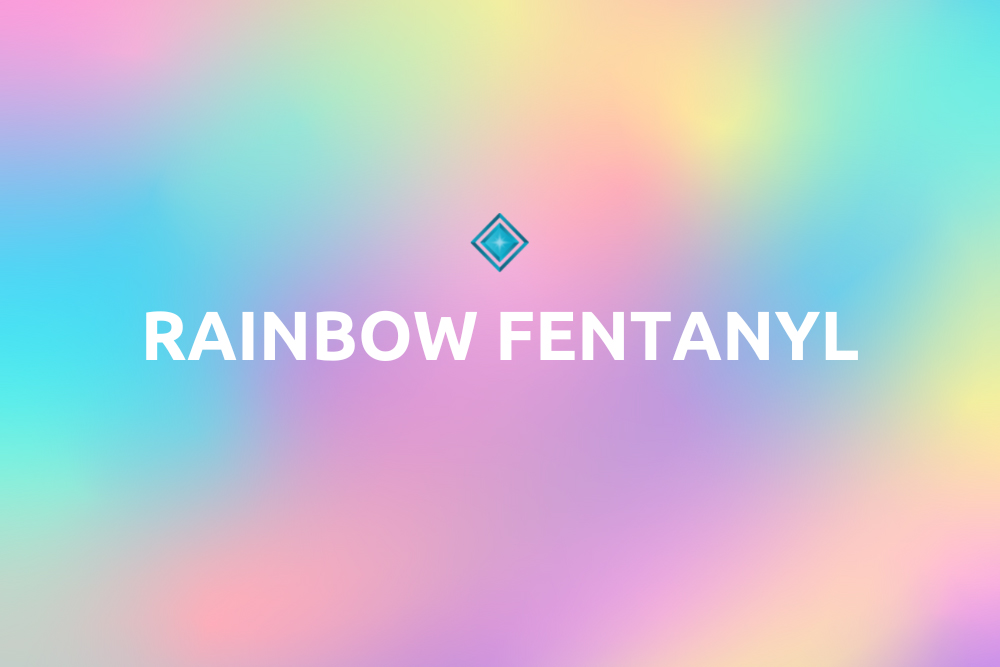Fentanyl is a potent synthetic opioid that has caused an alarming increase in the nationwide overdose rate. Because it is easier to come by than chemically similar substances like heroin and morphine, it’s leading the current wave of the opioid epidemic. Black-market fentanyl is also highly addictive, and a dose as small as two milligrams can be fatal. Recently, a colorful variety called “rainbow” fentanyl has made headlines. Learn more about the newest phase of our national drug crisis and what you should know.
Where Does Rainbow Fentanyl Come From?
Today, most fentanyl enters the U.S. from Mexico, where cartels battle for supremacy. Traffickers smuggle this lab-made substance across the border, fueling the national opioid epidemic. They use various tactics to deter law enforcement attention, including disguising their products as legitimate medications.
Fentanyl binds to opioid receptors in the brain, causing euphoria while simultaneously suppressing central nervous system functions like breathing. Without medical attention, someone who takes this drug can quickly experience respiratory failure.
What Does Fentanyl Look Like?
Fentanyl comes in different forms, such as pills, powder and liquid. It can resemble other substances, including meth, heroin and cocaine. Manufacturers can also press fentanyl pills into molds that look like prescriptions such as Percocet or Xanax. Fentanyl street names include Dance Fever, China Girl and Tango & Cash.
Recently, drug dealers have started dyeing fentanyl in colors like purple, yellow, red and blue. Many news outlets have reported that this “rainbow” fentanyl – which often resembles sidewalk chalk – is a deliberate effort to get young children to try drugs. You’ve probably seen alarming headlines about Halloween rainbow fentanyl. However, experts say these fears are likely overblown. It’s far more likely that the bright colors of rainbow fentanyl are manufacturers’ effort to make their products stand out in a crowded marketplace.
Though a persistent urban legend says some colors are stronger or deadlier than others, all hues and forms of fentanyl are equally dangerous. If you encounter rainbow fentanyl or a product that could have fentanyl added, it’s safest to avoid it entirely.
Signs of a Rainbow Fentanyl Overdose
Most fentanyl deaths result from an accidental overdose. Because fentanyl can mimic other substances, some people assume they are taking a different drug. Others deliberately seek rainbow fentanyl because they have heard about its powerful effects and want to experiment.
The warning signs of fentanyl use may initially look like alcohol intoxication, but can decline rapidly. Remember, a rainbow fentanyl overdose can occur within minutes of exposure. Recognizing these symptoms and immediately calling first responders can save a life.
- Drowsiness
- Dilated pupils
- Cold, clammy skin
- Blue lips and fingernail beds
- Confusion
- Nausea or vomiting
- Slow pulse
- A drop in blood pressure
- Weak heart rate
- Muscle weakness or limpness
- Dizziness
- Lack of balance and coordination
- Loss of consciousness
- Respiratory failure
Connect With Someone Who Cares
If you struggle with substance abuse, it’s possible to overcome addiction and make a fresh start. New Found Life has been helping people throughout the Long Beach community and beyond since 1993. Our established alcohol and drug rehab center offers a comprehensive continuum of care, from detox to transitional sober living. We provide compassion and a sense of belonging for the people who need it most. To learn more about how the structure and support found in drug and alcohol treatment can benefit you or a loved one, reach out to us today.

